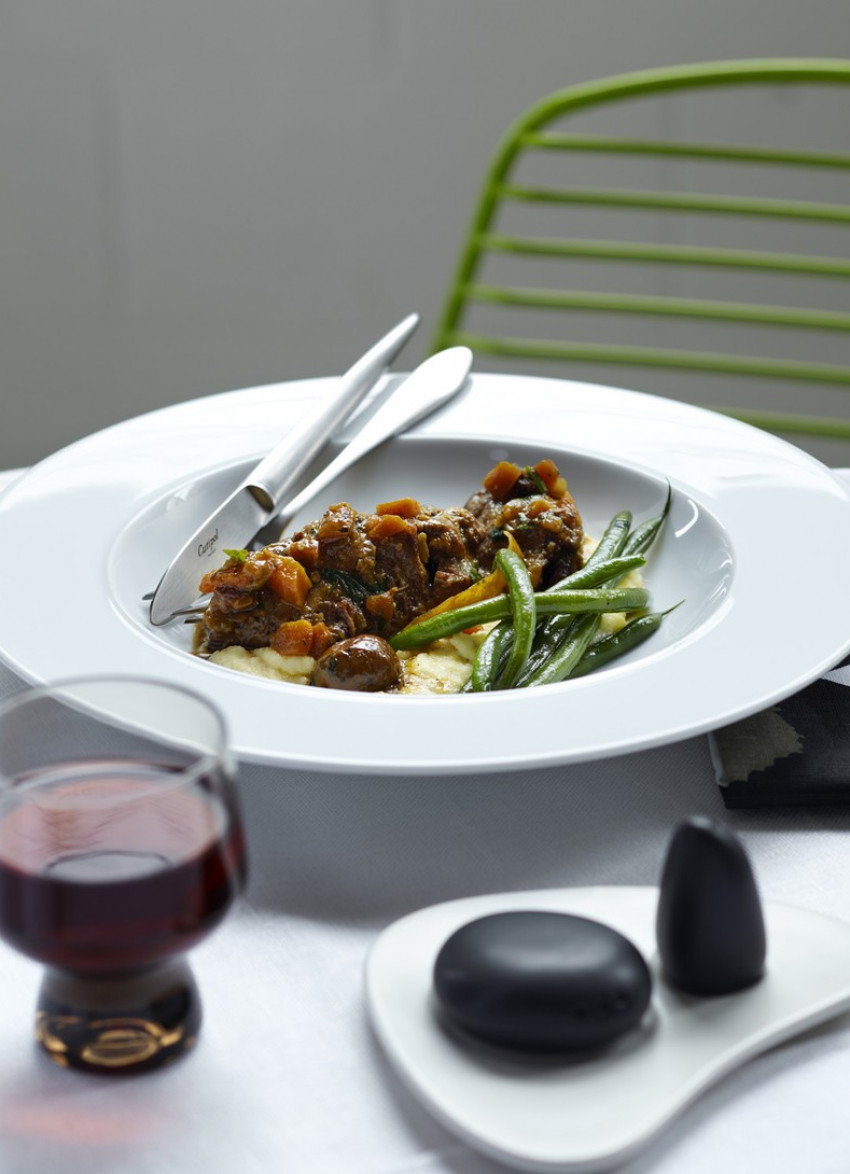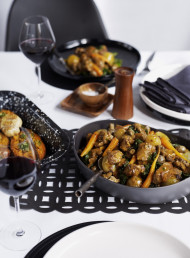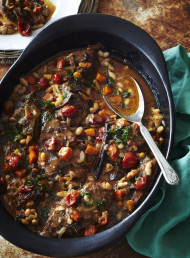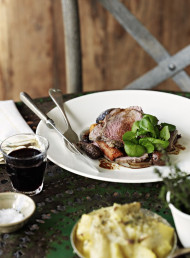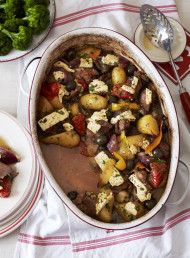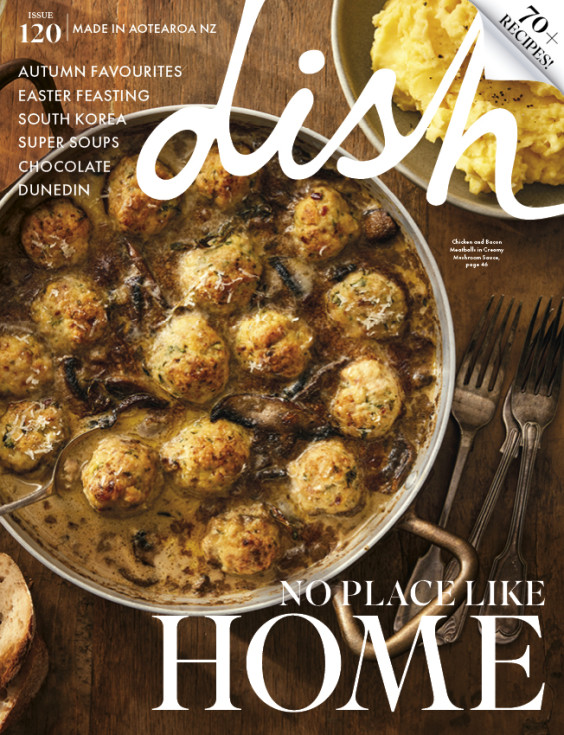Each region of Italy has its own traditional version of Easter Lamb, which hails the coming of spring. These Mediterranean flavours, combining lemon, oregano and olives, can be enjoyed year round. I have served this with soft polenta but mashed potatoes or saffron risotto would also make a delicious accompaniment.
Serves: 6
INGREDIENTS
1½ kilogram boned leg of lamb*
½ cup flour
sea salt and freshly ground pepper
3 tablespoons olive oil
1 each onion, carrot and stalk of celery, finely chopped
2 cloves garlic, crushed
1 tablespoon dried oregano, preferably Sicilian
1 cinnamon stick
2 bay leaves
4 long strips of lemon zest
1 cup white wine
1 cup beef or chicken stock
12 large green or black olives
¼ cup chopped flat-leaf parsley
METHOD
Preheat the oven to 150˚C.
Cut the lamb through the natural joins to give you 5-6 large pieces, trimming off the excess fat. Put the flour in a shallow dish and season well with salt and pepper. Toss the lamb in the flour, shaking off the excess.
Heat the olive oil in a large casserole dish or ovenproof sauté pan and brown the lamb on all sides. Don’t rush this step as you want a good golden crust. Cook the lamb in batches if necessary. Transfer the lamb to a plate.
Add the onion, carrot, celery, garlic, oregano, cinnamon stick, bay leaves and lemon zest to the pan. Season, cover and cook for 5 minutes. Uncover and cook until the vegetables are tender and starting to lightly caramelise.
Add the white wine, stirring to release any sticky bits on the bottom of the pan. Add the stock, olives, the lamb and any resting juices, back to the pan. Season. Place a piece of baking paper on top of the meat and cover tightly with a lid. Cook for 2 hours, turning the meat once, until it is very tender when pierced with a skewer. Using a slotted spoon transfer the lamb to a plate and cover to keep warm. If there is a lot of liquid in the pan, place back over a high heat and boil until the sauce is reduced and syrupy. Season if needed. Always season a sauce at the end of reduction, as the flavours will concentrate and the sauce may not require extra seasoning.
To serve: Add the flat-leaf parsley and the lamb along with any resting juices back to the sauce and turn to combine. Transfer to a serving dish.
When browning the lamb, don’t let the flour catch and burn. The bits on the base of the pan are important for the flavour of the dish. Adjust the heat if necessary.
The depth of the cooking vessel used will determine how much liquid remains when the lamb is cooked. Using a wide, shallow sauté pan will mean a greater reduction of liquid during the cooking process than you would get if using a deep, narrow casserole dish.
*This is the weight of the meat after the bone has been removed.
Keep up to date with
dish weekly recipes,
food news, and events.
latest issue:
Issue #120
As the days become shorter, and the nights cooler, the latest issue is perfectly timed to deliver delicious autumn dishes. From recipes using fresh seasonal produce such as feijoas and apples, to spectacular soothing soups and super-quick after-work meals in our Food Fast section, we’ve got you covered. With Easter on the horizon, we feature recipes that will see you through breakfast, lunch and dinner over a leisurely weekend holiday, and whip up chocolatey baking treats sure to please. We round up delicious dinners for two and showcase a hot new Korean cookbook before heading south to Dunedin to check out all that’s new in food and dining.The latest issue of dish is on sale NOW at all good bookstores and supermarkets – don’t miss it!

